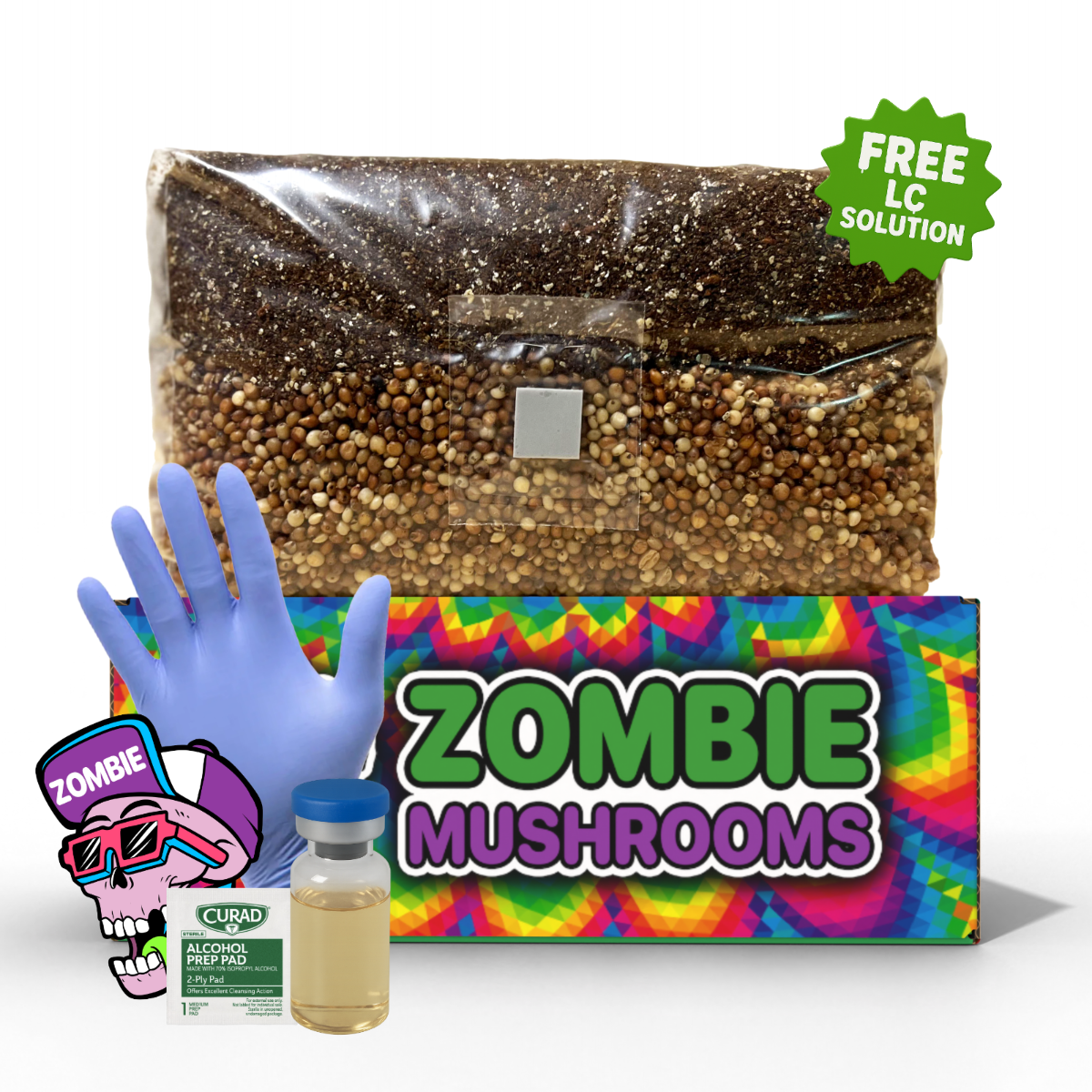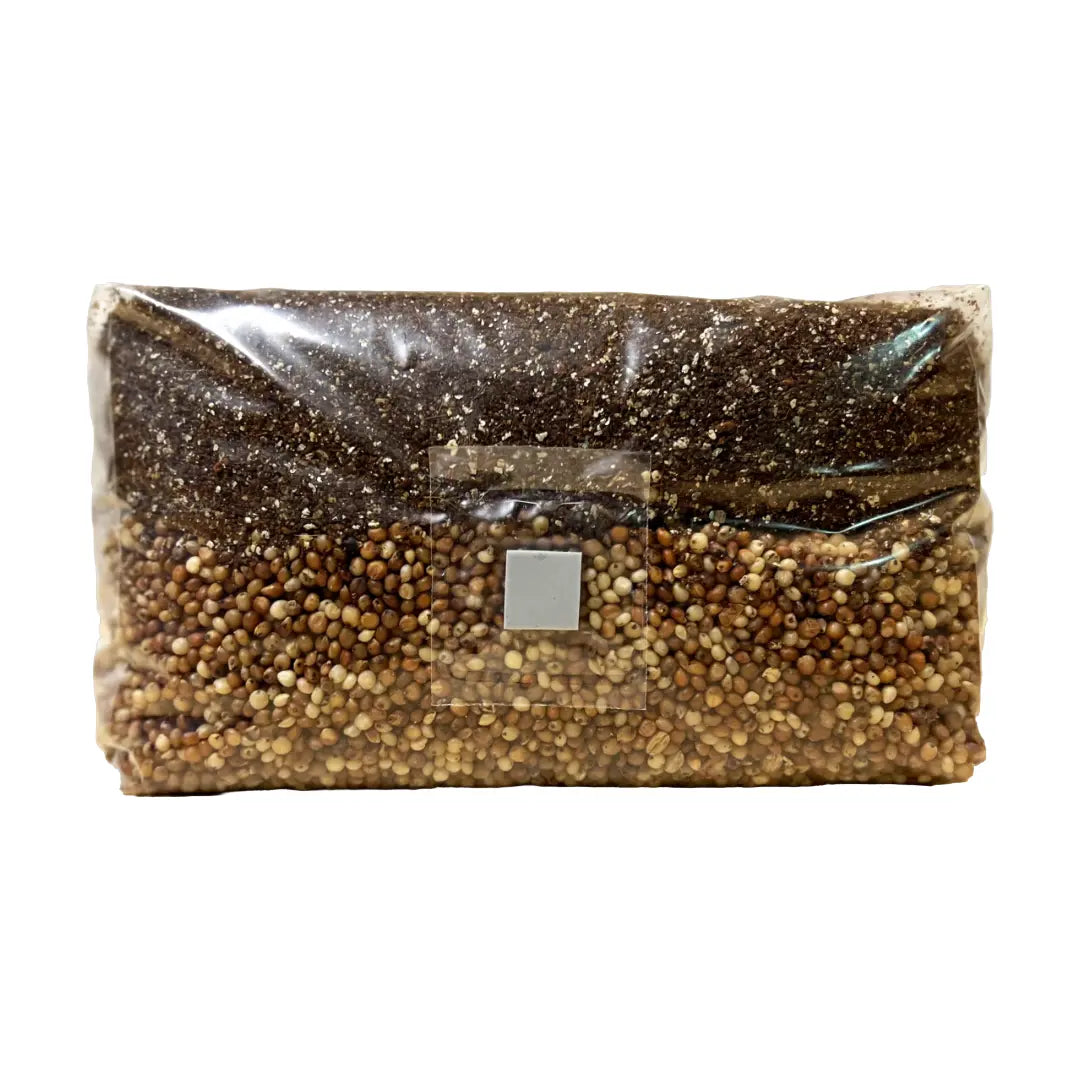- Grey oyster mushrooms are among the quickest edible types to grow, with harvests possible in just 3 weeks.
- They do well on inexpensive, sustainable materials like straw, sawdust, and coffee grounds.
- For best fruiting, 85–90% humidity and temperatures between 15–20°C (59–68°F) are needed.
- Each substrate can yield mushrooms 2–3 times, increasing the total harvest.
- The most typical problems when growing oyster mushrooms are contamination, inadequate airflow, and insufficient lighting.
Growing your own mushrooms might seem complex, but grey oyster mushrooms make it surprisingly straightforward. They are quick to grow, tasty, and good for beginners, making them an excellent option for anyone wanting to try growing mushrooms at home. This guide will take you through all the steps to successfully grow grey oyster mushrooms—from getting ready for your first batch to enjoying several harvests.
Why Pick Grey Oyster Mushrooms?
Grey oyster mushrooms (Pleurotus ostreatus) are very popular for both home and commercial growing. Their appeal comes from their flexibility, fast growth, and good nutritional content. These mushrooms do well in various conditions, can handle mistakes from beginners, and can even grow on farm waste, making them both environmentally friendly and cost-effective.
One thing that makes grey oyster mushrooms stand out is how fast they grow. They can colonize in only 7–14 days, and mushroom bodies often show up within a week after incubation. This quick speed is great for beginners who are eager or growers wanting to get as much production as possible.
In terms of nutrition, grey oyster mushrooms are quite beneficial. They are full of protein, dietary fiber, iron, potassium, zinc, and different antioxidant compounds that aid immune function and general health. Their texture and rich flavor also make them a good substitute for meat in vegetarian and vegan meals—popular in stir-fries, tacos, stews, or simply sautéed dishes.
Growers who care about the environment also appreciate grey oysters because they can turn waste into food. Straw, coffee grounds, cardboard, corn cobs, and sawdust—all of these can be used as substrate, greatly decreasing the environmental impact of growing.
Because of all these things, growing oyster mushrooms—especially grey oyster mushrooms—is a great introduction to home mycology.
What You'll Need: Materials and Equipment
To grow grey oyster mushrooms at home, you will need to gather some basic things. You can choose to grow completely from scratch using raw materials and spawn, or you can purchase a mushroom grow kit that is sold commercially for a simpler, easier process.
Essential Supplies
-
Mushroom spawn: This is what you will use to start your growing—a culture of mushroom mycelium grown on something like grain, sawdust, or liquid. Grain spawn is usually the best choice for beginners because it grows fast and is simple to use.
-
Substrate: Grey oysters are known for being able to use many different substrates. Straw works well for beginners, while hardwood sawdust pellets and used coffee grounds are good for more experienced setups.
-
Growing container: Plastic grow bags with filter patches are very good. You can also use plastic tubs, buckets with holes, or recycled jars—with changes to allow airflow.
-
Sterilization tools
- Big pot for pasteurizing substrate
- Thermometer to watch pasteurization or incubation temperatures
- Gloves and isopropyl alcohol to keep things sterile
- A clean area to work that is free of pests and dust
-
Environmental control tools
- Spray bottle or misting system
- Hygrometer and thermometer for watching conditions
- Optional: small greenhouse shelf (like a Martha tent), humidifier, and small fan
Using a grey oyster mushroom grow kit can make this process much simpler. Suppliers such as Zombie Mushrooms sell blocks that are already colonized and only need misting and time.
Step 1: Preparing Your Substrate
The substrate works as the food and home for your mushrooms. Grey oyster mushrooms readily grow on agricultural byproducts because of their strong enzymatic breakdown of cellulose and lignin.
Popular Substrate Options
- Straw (wheat, oat, barley) – Common for beginners, easy to pasteurize.
- Hardwood sawdust pellets – Best when you add wheat bran, makes dense, meaty mushrooms.
- Coffee grounds – Easy to get for free, but can get contaminated if not handled carefully.
- Cardboard – Not very nutritious but easy to get and useful for small grows.
Pasteurization Process
- Chop straw into 1–3 inch pieces to increase surface area and speed up colonization.
- Fill a big pot or bin with water and heat it to 160–170°F (71–77°C).
- Put straw in the hot water and keep the temperature for 45–60 minutes.
- Drain and cool the substrate using a colander or raised mesh tray. The substrate should reach "field capacity," meaning if you squeeze a bit, only a few drops of water should come out.
- Set it aside in a clean place with airflow for inoculation.

Step 2: Inoculating Your Substrate
Inoculation is when you add your mushroom spawn to the cooled, pasteurized substrate. It is very important to keep things sterile during this step to lower the chance of contamination.
Steps for Inoculation
- Wearing gloves, mix the spawn well into your substrate. Use about 5–10% spawn by weight for best colonization.
- Put the mixed substrate into your grow bags, plastic containers, or buckets. Do not pack it too tightly—leave space for air.
- If using bags, close them and make a few small holes for gas exchange unless they already have filter patches.
- Put a label on your bags or containers with the date and type of mushroom.
- Put the filled containers in a clean, dark spot for incubation.
Mixing well makes sure colonization is even, and uniform packaging helps keep moisture and oxygen levels consistent.

Step 3: Incubation – The Colonization Phase
This stage is not active but is very important for growing oyster mushrooms. During this time, the grey oyster mushroom mycelium spreads through the substrate, using nutrients and getting ready to produce mushrooms.
Environmental Requirements
- Temperature: 20–25°C (68–77°F)
- Lighting: Complete darkness or very little indirect light
- Humidity: Moderate (~60% is enough)
- Airflow: Not much, but do not seal it completely
Over the next 7–14 days, you will see mycelium as white threads spreading through the substrate. Once the whole block has a thick, white layer, you are ready for fruiting.
Tip: Do not open the containers during incubation because this could let in contaminants from the air.

Step 4: Starting Fruiting Conditions
Fruiting is when the mushrooms actually grow. To get your grey oyster mushrooms to make mushrooms (called “pinning”), copy changes from warm, dry incubation to a cool, moist, light environment.
Fruiting Conditions Checklist
- Humidity: Increase to 85–90%. Use a spray bottle to mist twice a day or use a humidifier.
- Temperature: Lower to 15–20°C (59–68°F).
- Lighting: Give indirect light for 12 hours a day. A window facing north or an LED grow light works well.
- Fresh Air: Increase airflow by waving air 2–3 times a day or using a small fan to circulate air.
Once you make X-shaped cuts in the bags or open the containers, small mushroom starts should appear within 3–7 days.

Step 5: Watching Pinning and Fruiting
Grey oyster mushrooms change visibly during the fruiting stage. This is what to expect
Key Milestones
- Day 1–3: Pinheads or very small baby mushrooms form around holes or cuts.
- Day 4–5: Mushrooms start to get bigger. Keep humidity high to stop caps from drying out.
- Day 6–7: The caps open up and the gills become visible underneath.
You can harvest when the caps just start to curl up at the edges. Mushrooms that are too mature will release spores that can cover your growing area in a fine grey dust—not harmful but messy.

Step 6: Harvesting Your Grey Oyster Mushrooms
When you harvest is important to get the best flavor, texture, and nutrition.
Signs of Readiness
- The cap edges just begin to curl upward.
- Gills underneath are clearly visible and light in color.
- No spore dust seen on or around the mushrooms.
Use a sterile knife or gently twist the clusters off. Be careful not to harm the rest of the tissue—this helps encourage a second harvest.
After harvesting, clean your tools and cut off any substrate pieces attached to the mushroom bases.

Step 7: Preparing for Second and Third Flushes
Growing grey oysters rewards patience. After your first harvest, your grow block rests before producing mushrooms again.
Rejuvenating Your Block
- Let the block rest for 4–7 days.
- Soak the whole block in clean, cool water for 6–12 hours to rehydrate it.
- Drain it and put it back into fruiting conditions.
- Wait for new mushroom starts and repeat the harvest process.
Most growers find that the second harvest is almost as large as the first, and the third is smaller but still worth it.

Step 8: What To Do With Spent Substrate
After your substrate stops producing mushrooms, do not throw it away—reuse it!
Creative Uses
- Compost: Break it up and mix it into your compost pile—it is full of nitrogen and organic material.
- Worm bin: Used substrate is good food for vermiculture.
- Outdoor propagation: Bury it under mulch in a shady place. You might get one more surprise harvest if conditions are right.
Reusing spent blocks adds to the sustainability and circular value of growing mushrooms at home.

Common Problems and Troubleshooting Tips
Even experienced mushroom growers make mistakes. Here are common problems for growing grey oyster mushrooms and how to fix them
| Problem | Cause & Solution |
|---|---|
| Contamination (green mold, bacteria) | Keep things clean. Sanitize tools, hands, and workspace before inoculation. Throw away very infected bags. |
| Slow or stalled colonization | Check temperature (not too cold) and moisture (not too wet/dry). Use more spawn if needed. |
| Mushrooms too small or malformed | Probably because of low humidity or poor airflow. Misting and waving air helps improve growth. |
| Tall, leggy stems with small caps | Caused by too much CO₂. Increase fresh air exchange right away. |
| Mushrooms dry out too soon | Not enough humidity in the air. Add a swamp cooler or mist more often. |
Each failed batch helps you learn. Keeping a record of your growing can help you find and improve your methods over time.

Advanced Growing Techniques for Grey Oyster Mushrooms
Want bigger harvests or larger projects? Move up to these more advanced methods
Substrate Enhancement
- Gypsum (calcium sulfate) improves water holding and pH stability.
- Wheat bran or rice bran adds nutrition for thicker mushroom clusters.
Controlled Growing Environments
- Monotubs: Big plastic bins with ventilation holes, inexpensive and simple to manage for indoor growing.
- Martha tents: Shelving units covered in plastic with humidity control tools—good for continuous production.
Automation Tools
- Timers for lights and humidifiers
- Ultrasonic foggers for humidity
- Thermostat-controlled heaters
- CO₂ monitors and automated vents for best gas exchange
These tools help keep conditions just right and scale up production easily.

Frequently Asked Questions
Can I grow grey oyster mushrooms outdoors?
Yes. In moderate places, bury colonized blocks in shady, moist spots like mulch beds. Rain and cool weather may start fruiting.
How long do harvested mushrooms stay fresh?
Freshly cut grey oysters last about 7 days in the refrigerator, best in a breathable paper bag.
Can I keep them for longer?
Yes. Dry them at 45–50°C (113–122°F) for storage up to six months. You can also sauté and freeze them for quick meal additions.
Enjoy the Rewards of Home Growing
Whether you want to lower grocery costs, live more sustainably, or just like the process, growing grey oyster mushrooms at home gives great benefits. They are a great starting point for growing mushrooms, giving quick results, good nutrition, and tasty cooking uses—all from your kitchen counter or closet shelf.
Look at tutorials, get help with problems from expert content, or get your grow kit from Zombie Mushrooms and start growing in hours—not weeks.



